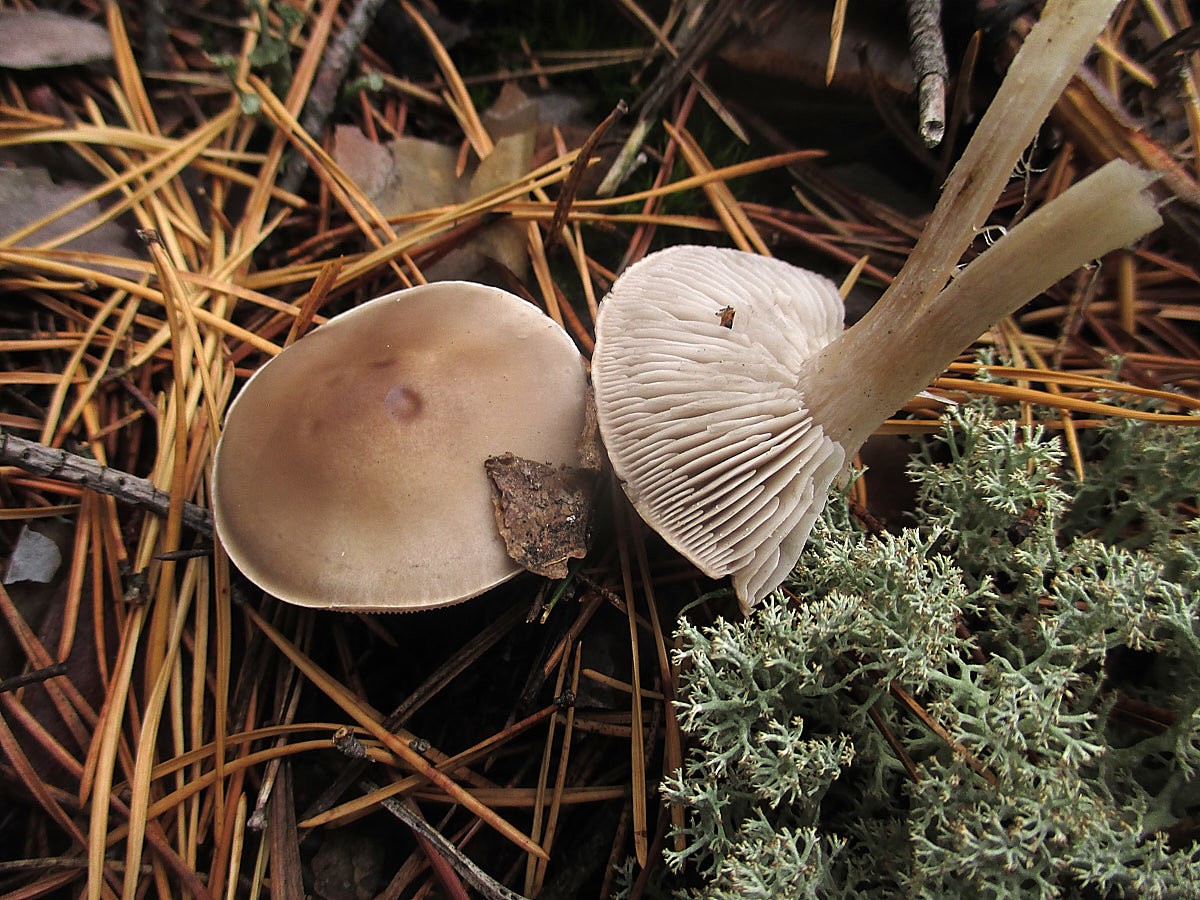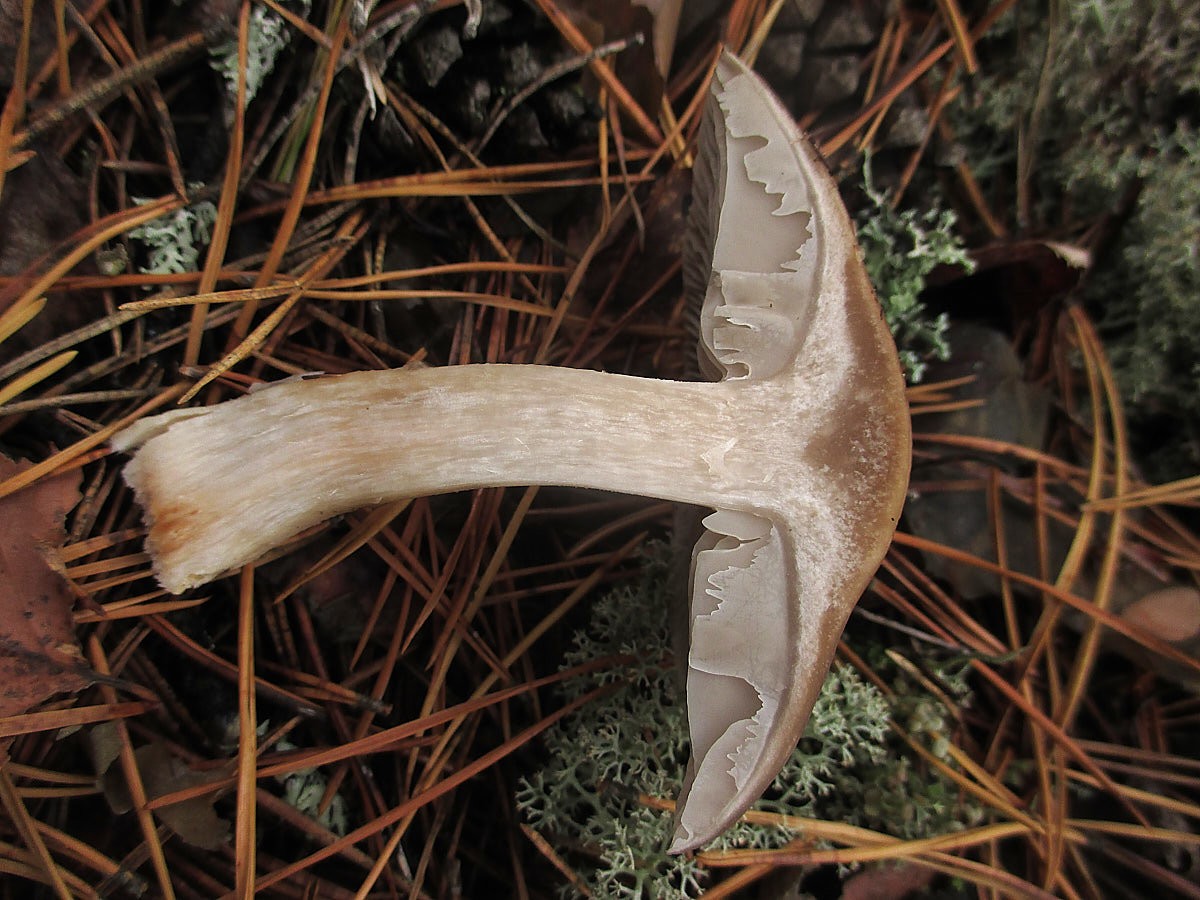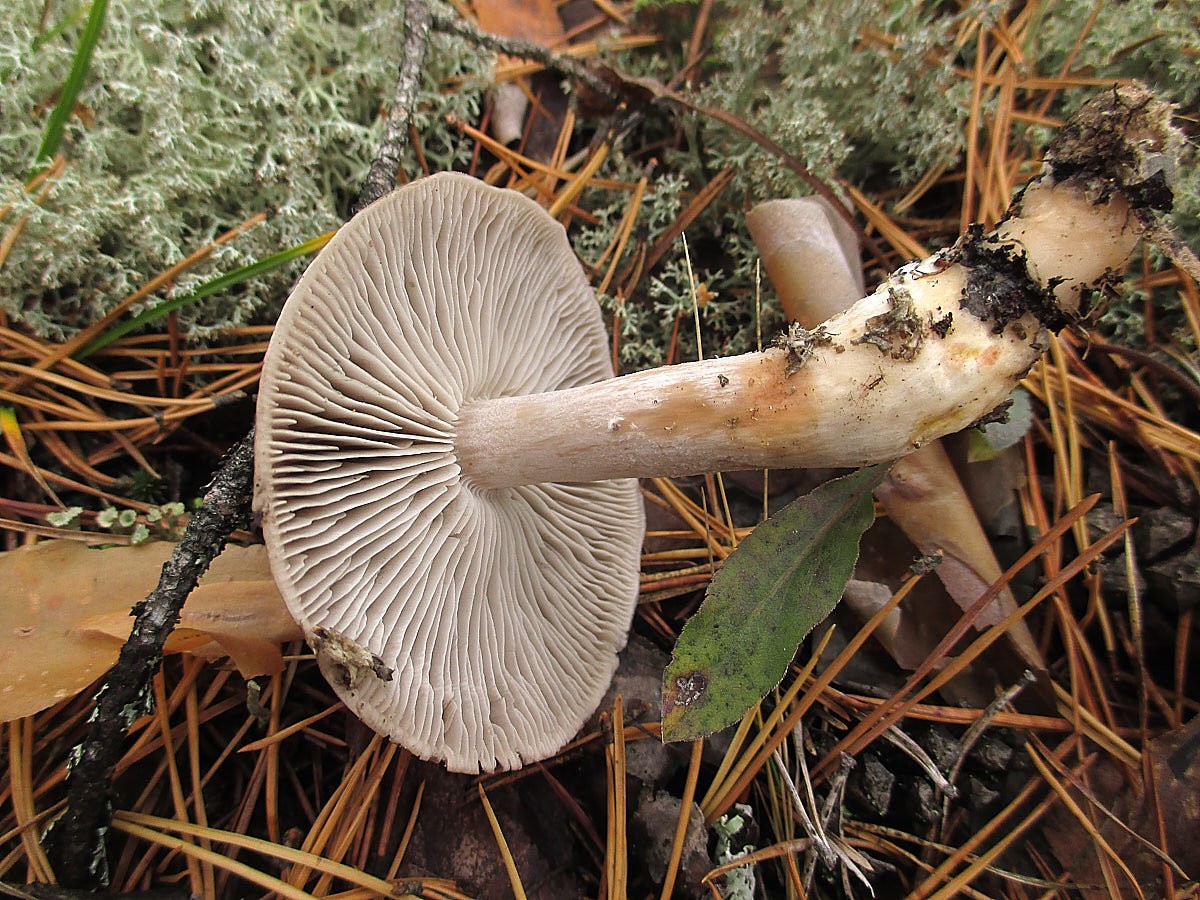Dry rowing (Tricholoma sudum)
- Diviziona: Basidiomycota (Basidiomycetes)
- Fizarana: Agaricomycotina (Agaricomycetes)
- Kilasy: Agaricomycetes (Agaricomycetes)
- Kilasy: Agaricomycetidae (Agaricomycetes)
- Karazana: Agaricales (Agarika na Lamellar)
- Fianakaviana: Tricholomataceae (Tricholomovye na Ryadovkovye)
- Karazana: Tricholoma (Tricholoma na Ryadovka)
- Type: Tricholoma sudum (Dry rowweed)
:
- Gyrophila suda

Species name Tricholoma sudum (Fr.) Quél., Mém. soc. Emul. Montbeliard, Ser. 2 5: 340 (1873) comes from Lat. sudus meaning dry. Apparently, the epithet comes from the preference of this species to grow in dry places, on sands or stony soil that does not retain moisture. The second translation of this epithet is clear, cloudless, hence in some sources this row is called clear.
lohany 4-13 cm in diameter, semicircular or bell-shaped when young, from flat-convex to prostrate in age, often with a flattened tubercle, smooth, may be slippery, dull, regardless of humidity, possibly with a frost-like coating. In old mushrooms, the cap can become wavy, seemingly felt, speckled. In dry weather, it may crack in the center. The color of the cap is gray, with a dark yellow or brownish tinge. Usually the cap is darker in the center, lighter towards the edges, in ocher or almost white tones. There may be faint radial streaks as well as dark gray teardrop spots.
pulp white, whitish, pale grayish, dense, slowly turning pink when damaged, especially at the bottom of the leg. The smell is weak, reminiscent of laundry soap, after cutting from flour to phenolic. The taste is floury, perhaps slightly bitter.

Records deeply adnate to adnate, medium width or broad, sparse to medium frequent, white, whitish, greyish, darker with age. Pink shades are possible when damaged or in old age.
vovoka spora fotsy.
disadisa hyaline in water and KOH, smooth, mostly ellipsoid, 5.1-7.9 x 3.3-5.1 µm, Q from 1.2 to 1.9 with average values around 1.53+-0.06;
leg 4-9 cm long, 6-25 mm in diameter, cylindrical, often tapering towards the base, sometimes deeply rooted in the substrate. Smooth, finely scaly above, fibrous below. By old age, noticeably more fibrous. The color is whitish, grayish, pale-grayish, in the lower part and in places of damage there may be pink (salmon, peach) shades.

Dry rowing grows in autumn, from the second half of August to November on poor sandy or stony dry soils together with pine. It is very widely distributed, but rarely occurs.
This row is the champion among the genus Tricholoma in entanglement with mushrooms from other genera.
- Soap row (Tricholoma saponaceum). The closest species to this row, including phylogenetically. The difference is in the color and appearance of the cap, so the mushroom is confused with it at a respectable mushroom age, when they become more or less similar.
- Smoky talker (Clitocybe nebularis), as well as close representatives of the genus Lepista At a young age, when viewed from above, if the specimens are large and strong, this row often looks quite similar to a “smoke” or some kind of grayish lepista. However, when you collect it, it immediately becomes clear “something is not right.” Grayish plates, grayish legs, pinking at the base of the leg. And, of course, the smell.
- Homophron chestnut (Homophron spadiceum). Young specimens are easily confused with this mushroom, which are more puny than those that look like a smoky talker. However, if we recall the habitat of the homophron, it immediately becomes clear that it cannot be here in principle.
Dry rowing is considered inedible.









